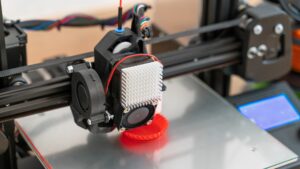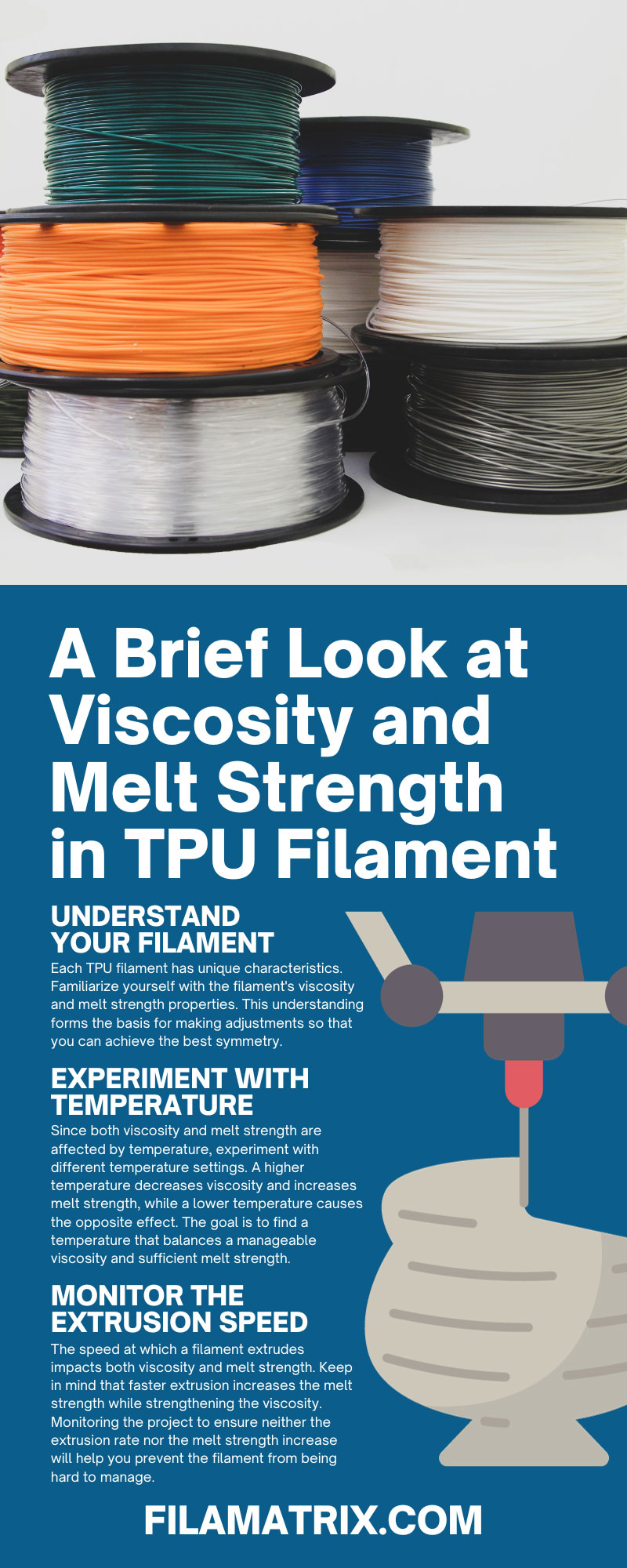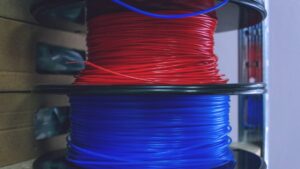
A Look at the Different Densities of 3D Printing Materials
There’s so much to learn about 3D printing materials. Come and find out what to look for when examining the different densities of 3D printing filaments.
844-810-1385
In 3D printing one can claim, “There’s a filament for that.” and be accurate about 90% of the time. Certainly, one of the more unique filaments in the 3D space frequented by mortals (those with printers costing less than a used car) is thermoplastic polyurethane (TPU), a flexible and strong material. However, successful TPU printing can be challenging due to its very unique properties, particularly its viscosity and melt strength. To gain a deeper understanding of these characteristics, we will take a brief look at viscosity and melt strength in TPU filament.
Viscosity refers to a material’s resistance to flow, where high viscosity means high resistance. In the context of 3D printing, viscosity can have an effect on a filament’s processing temperature, alter its behavior, and determine the final quality of a printed object. A filament with high viscosity might pose challenges in flowing smoothly through the printer nozzle, resulting in irregularities in the final print. On the contrary, a filament with low viscosity may flow too quickly, leading to distortions. Understanding how vital viscosity is to 3D print projects helps users achieve better results.
Just as we understand that multiple factors influence the weather, it is essential to note that the viscosity of TPU filament isn’t a standalone attribute; it is the result of a myriad of interdependent variables. This characteristic isn’t fixed but fluctuates based on these influencing elements. Recognizing that viscosity is subject to change under different conditions is pivotal, as it enables users to manipulate these variables, giving them greater control over the outcome in their 3D printing applications. Let’s review some of the factors that impact viscosity.
A fundamental principle in fluid dynamics is that viscosity decreases as temperature increases. This rule is valid for PLA, TPU, Nylon, and all other filaments. The filament becomes more fluid as it heats up, taking the viscosity down so that it flows more freely through the printer nozzle. Conversely, as the filament cools, its viscosity increases, making it more flow-resistant. Presto! We just described a 3D printer hot end.
The pressure inside the printing nozzle can also affect viscosity. As pressure increases, the filament becomes more compact, increasing its viscosity. However, if the temperature is impacted, the viscosity lowers. You have seen this if you have ever tried to force mortar from a mortar bag to grout bricks. Too much pressure and the grout hardens in the nozzle. (Hey, you never when this might come in handy.)
The specific chemical compounds comprising TPU affect its viscosity. Different compounds have different inherent gumminess, which has a direct influence on overall filament viscosity.
Just as viscosity is a vital aspect of 3D printing with TPU filament, so is melt strength. Melt strength refers to the molten filament’s ability to resist deformation (stretching) under its own weight when subjected to an external force (such as gravity). This characteristic is critical in 3D printing, as it directly influences the printed object’s shape and dimensional stability.
If molten TPU filament had low melt strength; it would readily sag or warp due to gravity and the movement of the 3D printer, significantly compromising the print quality. Conversely, a filament with high melt strength maintains its shape even when flowing, leading to more precise and aesthetically pleasing prints.
Understanding the melting point of TPU filament can significantly enhance your 3D printing experience. It allows you to predict how the filament might behave in the printer, thus enabling better control over the printing process.
Like viscosity, melt strength is also affected by temperature and chemical composition. However, it’s not just about understanding these factors but also about mastering the fine balance between viscosity and melt strength. This equilibrium is the key to achieving the best print quality, and we have tips on overseeing the interplay.
If achieving the perfect balance between viscosity and melt strength initially appears challenging, that’s because it is. But much of the hard work has been done for you, and that gives you the freedom to fine tune your printer from a starting point provided by your filament’s manufacturer.
Each TPU filament has unique characteristics. If you are making a challenging print, familiarize yourself with the filament’s viscosity and melt strength properties. This understanding forms the basis for making adjustments so that you can achieve the best balance.
Since both viscosity and melt strength are affected by temperature, experiment with different temperature settings. A higher temperature decreases viscosity and decreases melt strength, while a lower temperature causes the opposite effect. The goal is to find a temperature that balances a manageable viscosity and sufficient melt strength.
The speed at which a filament extrudes impacts both viscosity and melt strength. Keep in mind that faster extrusion increases the melt strength while raising the viscosity. Monitoring the project to ensure neither the extrusion rate nor the melt strength increase will help you prevent the filament from being hard to manage.
It’s essential to watch your 3D printer’s operating speed to avoid harming the equilibrium between viscosity and melt strength. A slower print speed can allow the filament more time to cool, increasing melt strength at the expense of higher viscosity. It can also allow a reduction in print speed, reducing the back pressure on the filament.
Pressure is another thing that affects both the gumminess and rigidity of TPU. Higher pressures can increase the filament’s viscosity, making it more flow-resistant. Still, high pressures can also enhance the melt strength, improving the filament’s ability to support its shape during printing.
Regularly check your printed objects for any irregularities. Warping, sagging, or distortions can show an imbalance between viscosity and melt strength. Use these observations to fine-tune your printer settings.
Mastering the balance between viscosity and melt strength is an iterative process. With patience and practice, you can achieve better printing results with your TPU filament.
Individuals who are just starting out in 3D printing may believe that they’re limited in their abilities, but they’re really only limited by their own imagination. With a comprehensive understanding of the viscosity and melt strength parameters of a filament like TPU, you can unlock a world of possibilities. With the right filament, settings, and knowledge, your 3D printer becomes an instrument of creation, transforming your innovative ideas into tangible reality. And if that doesn’t work, we’re here to help.
Ready to take the next step in your 3D printing journey? Embark on an exciting adventure with our TPU 95a, a filament with unparalleled performance and quality. Let’s redefine limits, reshape boundaries, and reimagine what’s possible with Filamatrix.
Filamatrix
NEVER. FEEL. LIMITED.


There’s so much to learn about 3D printing materials. Come and find out what to look for when examining the different densities of 3D printing filaments.

Those interested in 3D printing have a lot to learn on how to use the system properly. Find out what you need to know about 3D printing and humidity levels.

3D printing has many variables that both beginners and experts need to know. Find out what effects temperature has on 3D printer filament.
Get professional insights, industry news, and our latest deals